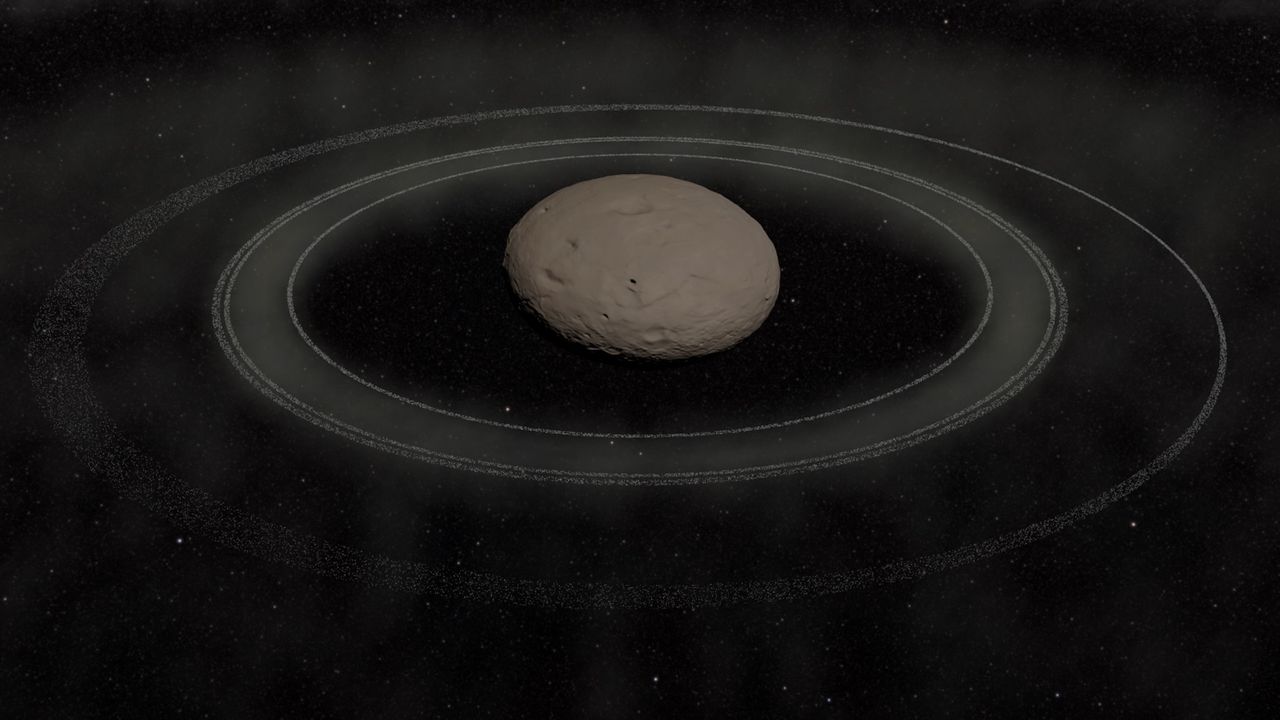
News
October 25, 2025
Strange object between Saturn and Uranus is 'evolving' its own ring system, study suggests
Astronomers have found signs that the small icy world Chiron, orbiting between Saturn and Uranus, may be forming a new ring system in near-real time.
**Icy Wanderer Chiron May Be Growing Its Own Rings, Scientists Say**
A small, icy world called Chiron, lurking in the vast emptiness between Saturn and Uranus, appears to be developing its very own ring system, a new study suggests. This discovery offers a rare glimpse into the dynamic processes that can shape celestial bodies and their surrounding environments in near-real time.
Chiron, classified as a Centaur due to its orbit traversing the outer solar system, has long been an object of fascination for astronomers. Its unusual behavior, including sporadic outbursts of dust and gas, has hinted at a complex and active surface. Now, evidence points towards something even more remarkable: the ongoing formation of a ring structure.
While Saturn is famous for its spectacular rings, other planets like Uranus and Neptune also possess fainter, less prominent ring systems. These rings are typically composed of ice particles, dust, and rocky debris, constantly colliding and interacting under the influence of gravity and other forces.
The evidence for Chiron's nascent ring system comes from observations of its brightness and spectral characteristics. Astronomers have noticed subtle but significant changes that suggest the presence of a disk of material surrounding the object. This disk, they believe, is gradually coalescing into a more defined ring structure.
The origin of this material is still under investigation, but one leading theory suggests that Chiron's activity, including those mysterious outbursts, plays a crucial role. These outbursts could be ejecting dust and ice particles into space, which then become trapped in orbit around the Centaur, forming the building blocks of the ring system. Another possibility is that Chiron collided with a smaller object, creating debris that is now orbiting the Centaur.
This discovery is particularly exciting because it provides a unique opportunity to study the formation of a ring system as it happens. By continuing to monitor Chiron's activity and the evolution of its surrounding material, astronomers hope to gain a better understanding of the processes that shaped the ring systems of the giant planets and the formation of planetary systems in general. Chiron, once a relatively obscure object, is now offering a front-row seat to one of the solar system's ongoing cosmic dramas.
A small, icy world called Chiron, lurking in the vast emptiness between Saturn and Uranus, appears to be developing its very own ring system, a new study suggests. This discovery offers a rare glimpse into the dynamic processes that can shape celestial bodies and their surrounding environments in near-real time.
Chiron, classified as a Centaur due to its orbit traversing the outer solar system, has long been an object of fascination for astronomers. Its unusual behavior, including sporadic outbursts of dust and gas, has hinted at a complex and active surface. Now, evidence points towards something even more remarkable: the ongoing formation of a ring structure.
While Saturn is famous for its spectacular rings, other planets like Uranus and Neptune also possess fainter, less prominent ring systems. These rings are typically composed of ice particles, dust, and rocky debris, constantly colliding and interacting under the influence of gravity and other forces.
The evidence for Chiron's nascent ring system comes from observations of its brightness and spectral characteristics. Astronomers have noticed subtle but significant changes that suggest the presence of a disk of material surrounding the object. This disk, they believe, is gradually coalescing into a more defined ring structure.
The origin of this material is still under investigation, but one leading theory suggests that Chiron's activity, including those mysterious outbursts, plays a crucial role. These outbursts could be ejecting dust and ice particles into space, which then become trapped in orbit around the Centaur, forming the building blocks of the ring system. Another possibility is that Chiron collided with a smaller object, creating debris that is now orbiting the Centaur.
This discovery is particularly exciting because it provides a unique opportunity to study the formation of a ring system as it happens. By continuing to monitor Chiron's activity and the evolution of its surrounding material, astronomers hope to gain a better understanding of the processes that shaped the ring systems of the giant planets and the formation of planetary systems in general. Chiron, once a relatively obscure object, is now offering a front-row seat to one of the solar system's ongoing cosmic dramas.
Category:
Technology